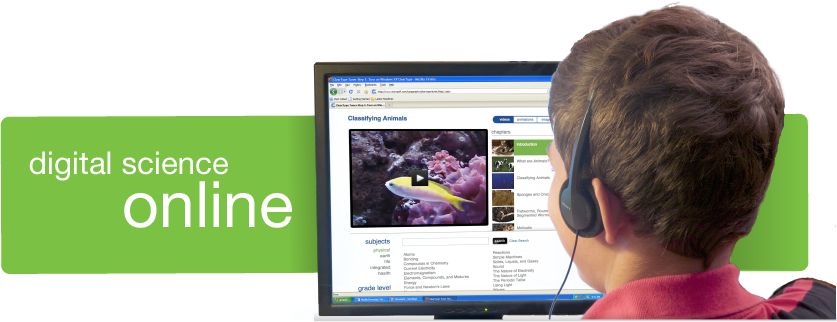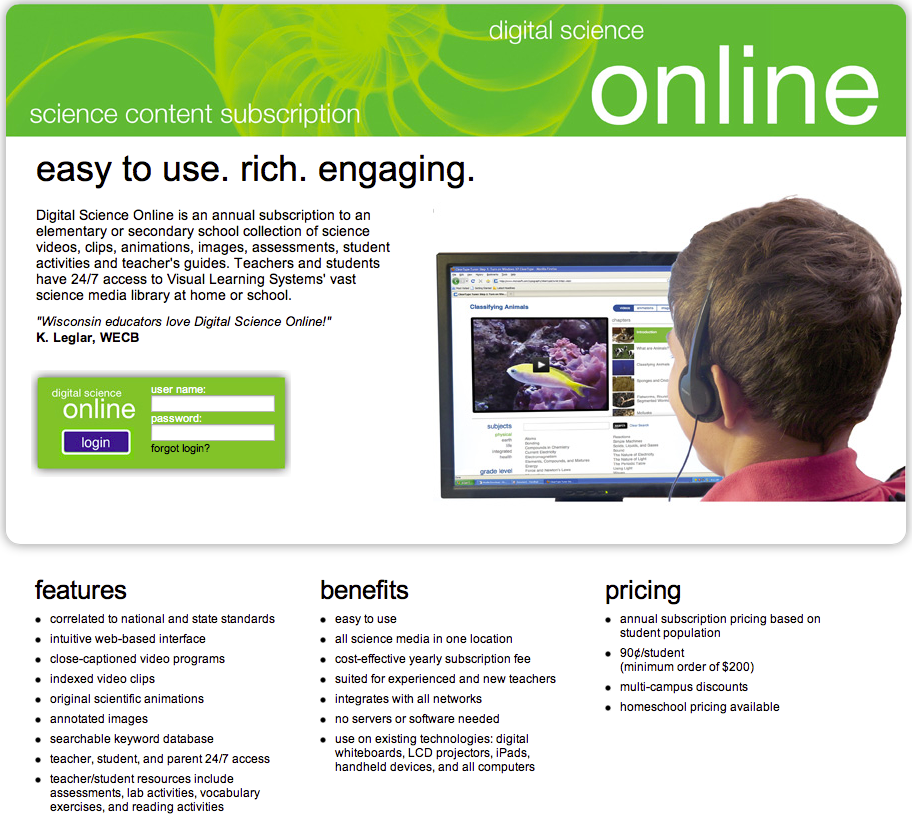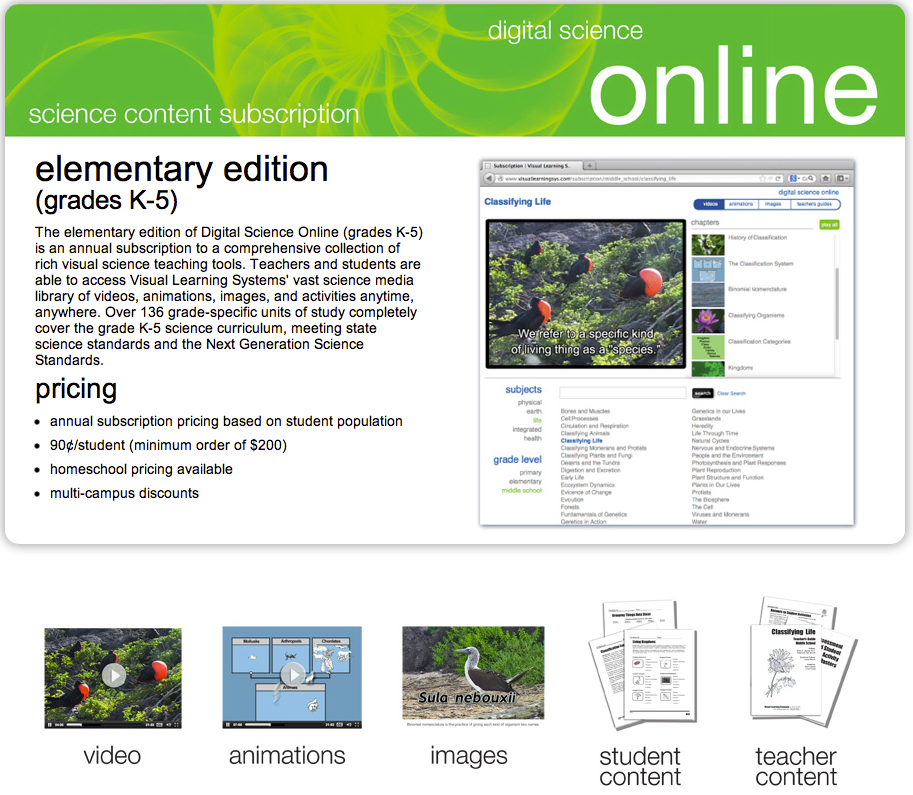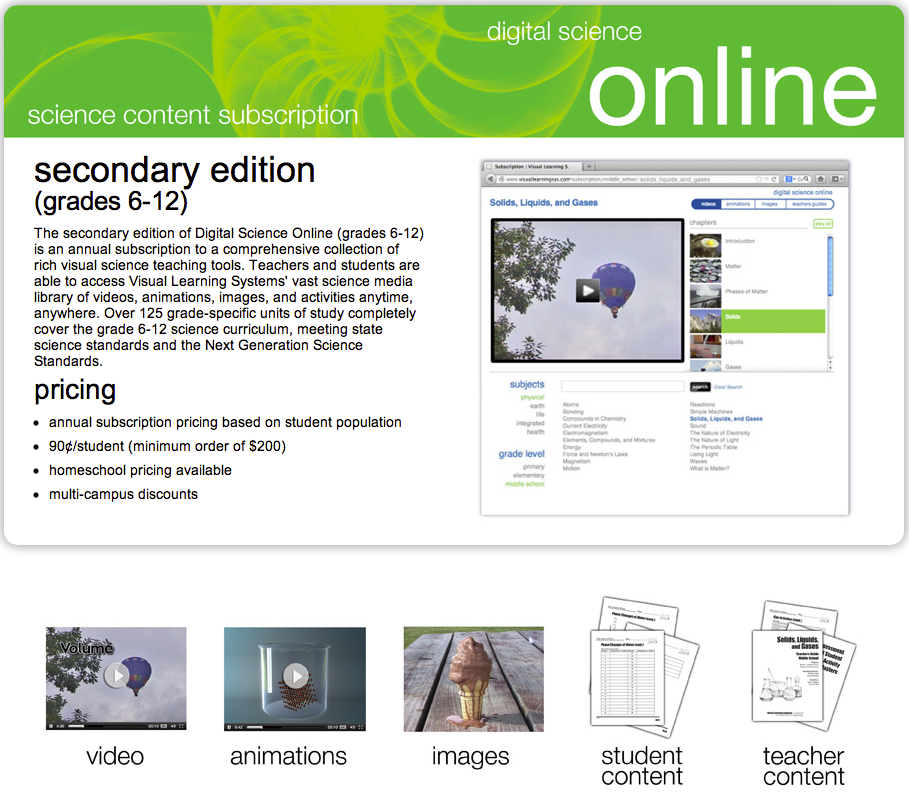There are some subjects that I am more comfortable doing the way I was taught in school, and despite reading The Well-Trained Mind and being very impressed at the methodology employed, science is one of those subjects. It can be hard finding a curriculum that "does science" the way I had it in elementary and jr. high back in the olden days (the 80s), though. Imagine my delight when the Crew got to review Visual Learning Systems! Making allowances for modern technology, because of course, the program is technologically sophisticated, the basic methodology is what I grew up with! Films, slides (of a sort), worksheets. It's probably not for everyone, but it worked for me, and it's how I want to be able to teach my kids. I just never knew it existed until now.
With both Digital Science Online: Elementary Edition (Grades K-5) and Digital Science Online: Secondary Edition (Grades 6-12) to choose from, you are sure to find the right match for your family.


Digital Science Online (both editions) is a content subscription website service. You pay one price ($99 for the homeschool version - that buys you *either* the elementary or the secondary edition, not both), and you have access to everything. There are five parts to each unit: videos, animations, images, student content, and teacher content.

The meat of the program is in the video portion. Here, you will find video segments averaging (in my limited experience comprised of using the program for the last six weeks) about 20-30 minutes, each covering a single topic within a larger subject. The animations and images complement the videos, often coming directly from them. The student activities (embedded within the teachers guide) consists of a pretest, a video review (which covers the material in the video and is actually completed after the video as *part* of the video, if that makes sense. In other words, the questions are asked at the end of the video segment), and a post test. Other activities are included according to the topic. My children recently completed the topic "Circulation and Respiration" at the Secondary level. Here is a look at all of the student activities:

So, after watching the video, my kids did an activity on blood groups, took a journey through the heart, learned how to monitor their pulse, and did a vocabulary exercise (that is some hard vocab!). Not bad for a day's work in science!
The teacher content includes EVERYTHING. I mean it - everything. It even includes the video script! First, there is a segment telling you how to introduce the video (because this is structured for a "real" classroom, things may not always apply quite as well as to homeschool, but you can absolutely make it work). In the case of the Circulation and Respiration segment, you are told to introduce the section by having students press on their necks to feel their pulse and then explaining how the heart pumps blood through the body. I have been skipping these intros (but I generally skip all such formalities). You are provided learning objectives. I can see cases where this may be significant. The student activities are given. Finally, as I said, you actually have the entire video script. This can be a lifesaver if you are not sure if a video is going to be appropriate, but you have no desire to sit through it to find out - just skim the script!

What Kinds of Topics are Included?
You are getting a lot of options with Visual Learning Systems! At the Elementary Level, you can choose among physical, earth, and life science. Within each "course," there are approximately 20-30 topics. Each topic has all of the components I discussed above (videos, animations, images, student, and teacher content). I originally thought we would be using Elementary science for some of my kids, but it turned out that the Secondary level was more appropriate for all of my children (hooray when everyone can do a subject together!).
At the Secondary Level, you can choose among physical, earth, life, integrated, health, and biology. Integrated, in case you're curious, deals with subjects like the metric system, observations and data, the microscope, and science fair projects. It has (by far) the fewest topics.
What We Did for Science
In order to get a feel for the program, I initially let my children (10, 10, and 11) choose what they wanted to work on. Color me unsurprised that they chose Earth science. They watched the first video and really, really liked it. Once they figured out that questions were going to be asked at the end of the video, they asked me if they could do the video review *during* the video. What can I say? I'm nice - I let them from there on out. There was also a really good geologic time line activity among the student activities.
Once we all saw what Visual Learning Systems was like, I told my kids that we would not be doing Earth science for the umpteen millionth time. There was sadness. Rather, I told them, we would be doing life science! I would love to say there was cheering...but I would be prevaricating. Regardless, we jumped right in to Secondary life science, whose first few topics look like this:
I chose life science because my kids have never had a full course in it. We've danced around it. Too, like I said above I really like the way this program does science. Even the "table of contents" shown here is so complete and perfect for the topic (N.B. this is a fraction of the course I'm showing).
We do science an average of 3 times a week. The first day the kids watch the video for the day and do the video review (I have eschewed the pre-test - why embarrass everyone and make me feel bad?). The next day they do the rest of the student activities. The final day they watch the video again and take the post-test. Yes, I realize that watching the video twice may seem excessive, but this is the Secondary level, and they are, technically, only 4th/5th (the twins) and 6th grades. I know their chances of retention are much better if they see the videos twice. I may have to pick up the pace when our subscription time runs short, but for now, I'm happy with what we're doing.
Visual Learning Systems is a great program that fills a much needed niche for homeschoolers like me who prefer a more traditional "public school" approach to science. As always, the Crew will have a variety of opinions, so be sure to read their opinions by clicking the banner below.











No comments:
Post a Comment